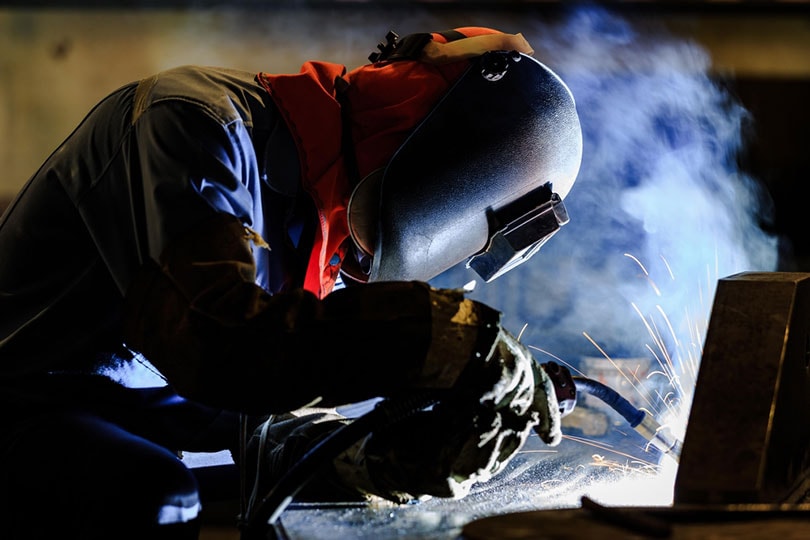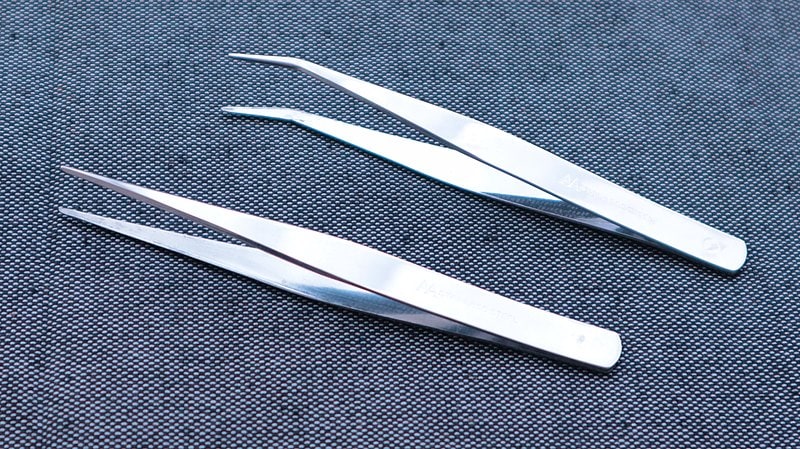Can You Weld Stainless Steel with Flux Core? All the Facts!
Last Updated on

Stainless steel is a generic term referring to various steel types that vary based on certain characteristics. There are various ways you can weld different kinds of stainless steel, and flux core is one of them.
In recent years, flux core welding has gained popularity due to its ease while welding, using even basic machines.
In this article, we will look at how you can go about welding stainless steel with flux core and provide an all-around analysis of the process.
Let’s dig in!
Main Categories of Stainless Steel
Stainless steel exists in several different forms. It is made from a range of iron-based alloys with a minimum of 10.5% chromium. Each stainless steel has various characteristics that may influence how to weld them.
To better understand whether you can weld stainless steel with flux core, we first need to understand the various kinds of stainless steel.
Below are the three major categories:
- Austenitic stainless steel
- Ferritic stainless steel
- Martensitic stainless steel
Austenitic Stainless Steel
https://www.instagram.com/p/CDqolqQDVRL/
It is one of the most common types of stainless-steel. It has a high concentration of chromium compared to most steel alloys, offering a bigger corrosion resistance.
It is also non-magnetic but can become magnetic after cold working.
- Grade 304 Stainless Steel: This is one of the more common types of austenitic stainless steel and comes with high tensile strength of roughly 90ksi. It also has a maximum operating temp of 870°C. The combined characteristics make it a favorite for several applications.
- Grade 316 Stainless Steel: This grade of stainless steel also comes with high tensile strength at 84ksi, plus a maximum temperature of 800°C. Although the tensile strength is lower than the 304 grade, it has better resistance than chlorides such as salt.
Ferritic Stainless Steel
https://www.instagram.com/p/CAZ8BM4jyWb/
This is also quite a common type of stainless steel, but not as common as the austenitic steel. It is a magnetic kind that can be hardened through cold working. Also, they tend to be less expensive due to the reduced nickel content.
- Grade 430 Stainless Steel: The grade 430 stainless steel is famous for its level of resistance against nitric acid. It has a tensile strength of 65ksi.
- Grade 434 Stainless Steel: This is a stronger grade of stainless steel with a tensile strength of 78ksi and a maximum temperature of 815°C. This makes it a bit better compared to high-temperature applications. It also has a high resistance to pitting.
Martensitic Stainless Steel

This is the rarest type of stainless steel with a lower corrosion resistance than its counterparts. However, they are quite hardy and ideal for high tensile strength applications.
- Grade 420 Stainless Steel: When annealed, this stainless steel has a tensile strength of 85ksi, and after hardening, the tensile strength jumps to 230ksi. It has good resistance to water, some alkalis, and mild acids.
Welding Stainless Steel with Flux Core
When welding stainless steel, flux core welding is considered one of the best alternatives. The wire provides way more than just speed and quality but also higher tensile strength.
Since stainless steel is high in density, welding with flux core will provide a high deposition rate, especially with such styles as MIG welding with flux core wire, as they are quicker and easier to accomplish.
Whenever you use the flux core welding technique, you will require shielding to prevent any melted metal from splashing. Depending on the type of welding you want, you can either go for self-shielded or gas-shielded flux core welding.
For self-shielded flux, core wires are independent and, when melted, they create their gas shielding around the wire. Self-shielded wires are mainly used to weld thick metal pieces with a high deposition rate and are quicker.
Gas shielded flux core is used to weld metals positioned vertically. They form a protective slag around the metal when welded. The slag will prevent melted metal from splashing. After the metals have been welded, the welder should remove the collected slag.
https://www.instagram.com/p/BDRMVl5IG7O/
How Flux Core Welding Works
A wire will be fed through the welder to the welder gun. This may appear similar to MIG welding; however, what sets it apart is how the filler metal is protected, where MIG welding has a separate gas cylinder hooked up to the welder. The shielding gas is then fed from the cylinder to the welding gun, protecting the wire from toxins that would spoil the weld.
On the other hand, flux core welding comes with materials that create the purifying agent and shielding gas in case the arc is struck and heated. The internal shield protects the weld pool, and the wire will provide the filler metal. This is then heated and drips to form the weld between the two metal work pieces.
- Flux core welder
- Welding gun
- The metal workpiece
- Spools of welding wire
Advantages of Flux Core Welding
- Metallurgical benefits: There are certain metallurgical benefits from using flux core welding, where the entrapped slag and gas within the metal help create better quality. The slag also has elements that improve corrosion resistance, toughness, and crack resistance.
- Difficult joints, including vertical joints, are easier to work with flux core welding.
- High deposition rate process: Flux core welding provides a fast deposition process, especially when using gas-shielded wires that can deposit a weld in seconds. Also, the weld thickness is altered by constant voltage supply plus the plastic flow of the weld
- Reduced production costs: Although the price of flux wire is higher than solid wires, the overall cost of welding material, equipment depreciation, energy consumption, welding efficiency, auxiliary time, and other aspects, flux core welding comes out on top in terms of cost of operation.
- Flux core welding is high in efficiency, quality, and low energy consumption and uses energy-saving tech.
- Slag support: Slag forms weld beads, making it important to have a uniform thickness. The electrode’s diameter is also important in ensuring the weld bead is even in terms of uniformity.
- Heat input: Flux core welding uses thin wires, which help reduce the heat input and provide faster travel speeds than other welding processes. This, in turn, reduces thermal distortion while increasing material utilization rates.
- Stable arc temperature: Due to the flux in the flux core being stable from the thermo-sensitivity, it reduces the need for a heater which provides greater stability to the electrode temperature.
https://www.instagram.com/p/BlDp1Kfn2Q3/
Disadvantages of Flux Core Welding
- Excessive splatter: Due to the arc length in flux core welding, the slag will be dispersed in a wider area compared to SMAW or GTAW.
- Poor results near gaps or cracks: The penetration of the gas shielded wire is blocked for short-time bubbles, especially when welding is done near a gap or crack.
- Heavy fumes: The flux core process uses a gas shield wire which may lead to a lot of fumes, and an exhaust system and safety glasses may be required.
- Weld becomes brittle: The flux core welding materials have several elements that may affect the weld and increase brittleness. The welding quality of the solid wire is a bit different from tubular wires, with the strength of the flux core being lower than that of SMAW or GTAW due to the flux content.
Safety Practices When Working with Flux Core
One of the biggest priorities for a successful flex core welding job, or any other welding job is the safety practices. You require a welding helmet to protect your ears, neck, and face from any welding debris. Apart from this, it would help if you also had safety glasses to protect you from the excessive light from the welding process.
You will also need welding gloves to protect your hands from the hot debris and metal, plus welding sleeves, apron, and jacket.
Ensure you don’t cuff your shirt or pants as sparks may get lodged in and burn you. Also, ensure you tuck your pants in a sturdy pair of boots with additional fire-resistant clothing.
Final Thoughts
The best option for stainless steel is flux core welding; however other forms of welding can also apply for the same job. Ensure you have proper knowledge about the venture you are about to undertake to ensure you get the best results. Also, be well protected in terms of gear to prevent any injuries. Otherwise, get your welding gun and get started on your stainless steel using the flux core methodology.
You may also be interested in: Can You Weld Stainless to Mild Steel? All the Facts!
Featured Image Credit: Kimtaro, Shutterstock
